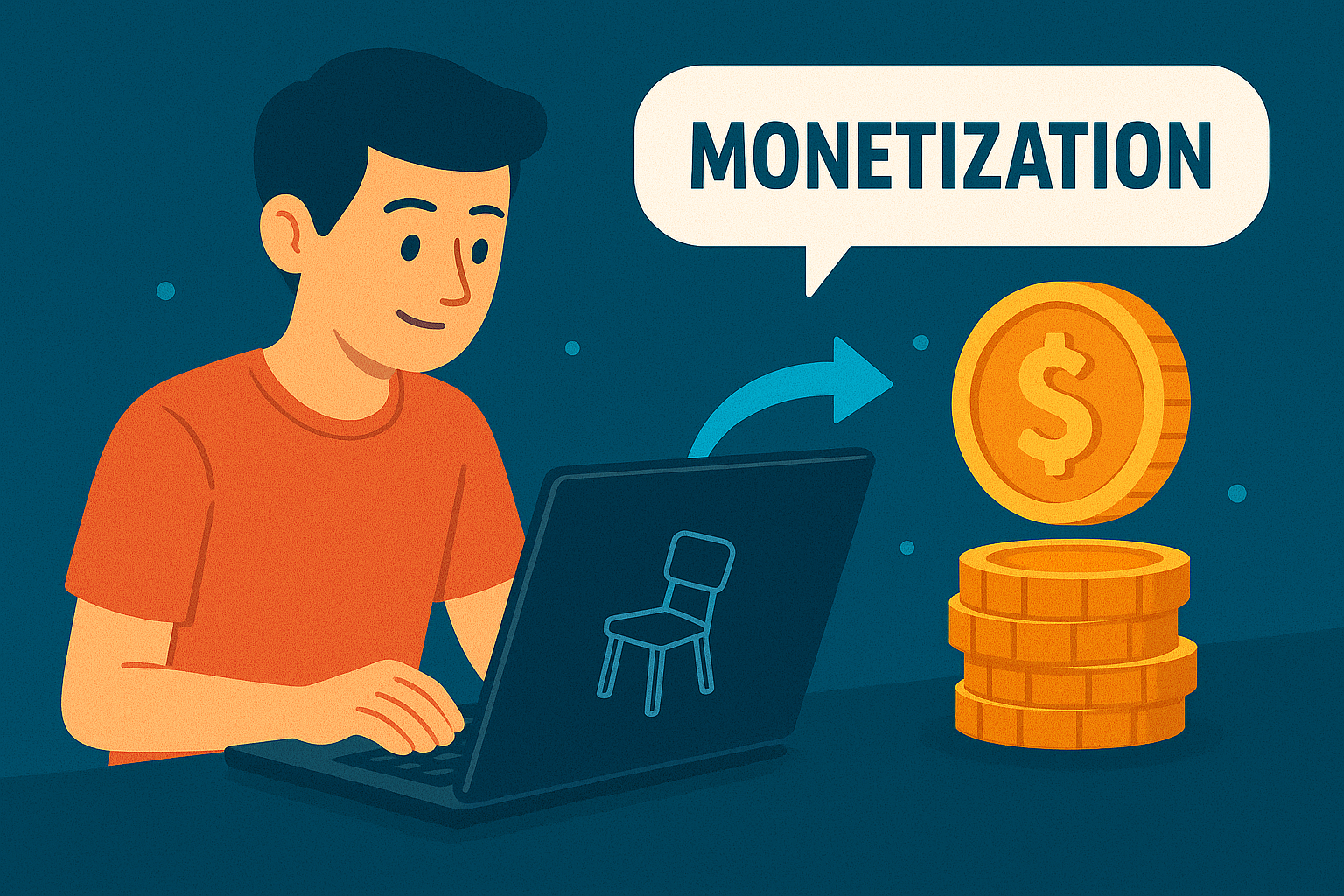
Fast3D's Text/Image-to-3D Revolution! New Monetization Strategies for Creators
Fast3D supports both text-to-3D and image-to-3D modes, generating commercial-grade 3D models in 10 seconds to help content creators achieve breakthrough monetization
What's the income ceiling for video content creators?
How can graphic designers break through 2D limitations? How can illustrators make their work more valuable? The answer to these questions might all point in the same direction—3D content creation.
But traditional 3D production barriers have kept most content creators at bay. Learning Blender takes six months, outsourcing a 3D model costs thousands of dollars—these costs are simply too high for individual creators.
Yesterday I saw a video where a creator took a photo of a burger with their phone, and in 10 seconds it became a 360-degree rotatable 3D model. The comments exploded: "What kind of black magic is this?" "How did they do that?"
I was curious too, so I checked out their profile and found that this food blogger's recent videos were getting several times more views than before. After they started using 3D food displays, their completion rate increased by 40%, and follower growth returned to 20% monthly.
This reminded me of my friend Tom, an indie game developer. Previously, his biggest headache was art assets—outsourcing costs could eat up 60% of project budgets. Now he directly uses text descriptions to generate 3D models: "Medieval-style iron sword with blue runes on the blade and leather-wrapped handle," and 10 seconds later he has a complete game prop. He completed what used to take six months of art production in one month, cutting project timelines by 70%.
These two people actually use the same tool—Fast3D—but chose completely different approaches.
Food blogger Lisa chose image-to-3D because she had existing food photos to upload and convert directly. Game developer Tom chose text-to-3D because he needed original concepts—ideas in his head but no reference images.
Which approach is better? There's really no standard answer—it completely depends on your specific situation.
If you're like illustrator Anna with lots of existing flat artwork you want to upgrade for monetization, then image-to-3D is your best choice. After Anna converted her flat illustrations to 3D models, the same artwork's income jumped from $50 directly to $500. She told me that clients seeing the 3D effects felt they had more value and were willing to pay higher prices.
But if you're like sci-fi writer Mike who frequently needs to create unprecedented concepts, then text-to-3D suits you better. Mike uses text descriptions to generate various alien creatures and future technology, then uses these 3D models for video content. Audiences find it particularly stunning, and his subscriber count keeps climbing.
I carefully researched market data and found that 3D content value really is so much higher than flat content. Flat illustrations average $10-50 per piece, 3D models can sell for $125-500 each, and 3D animations can reach $500-2500 per minute. This value gap explains why more and more creators are transitioning to 3D.
The timing is particularly good right now. AI 3D generation technology is mature enough with commercial-grade quality, but most creators haven't realized this trend yet. Major content platforms are also promoting 3D/AR content with traffic preferences. User acceptance of 3D content is rapidly increasing, and they're willing to pay for high-quality 3D content.
Take e-commerce for example—Kevin used to manage a furniture brand with consistently poor conversion rates. After introducing 3D displays, conversion rates increased by 65%, return rates dropped by 30%, and average order value increased by 25%. The reason is simple: customers can view products from all angles and have accurate expectations about size and appearance before purchasing.
Fast3D's advantage is that whether you choose text-to-3D or image-to-3D, you can complete generation in 10 seconds with commercial-grade quality, including commercial usage rights without copyright concerns.
Plus you can flexibly choose based on each project's needs. Today use text-to-3D to create sci-fi scenes, tomorrow use image-to-3D to make sketches three-dimensional—it completely depends on your creative needs. Some people even implement the same creative idea with both methods, then compare results to choose the best approach.
However, tools are just tools, no matter how good they are. What really determines monetization success is still the creator's creative level and market sensitivity.
By the way, Fast3D is continuously upgrading, with batch processing features and API interfaces coming soon. This will be much more creator-friendly for high-output needs, and those with technical skills can integrate directly into their own workflows.
Author
Categories
More Posts

Goodbye 17-Hour Modeling! Fast3D Helps Designers Create 3D Prototypes in 10 Seconds
Say goodbye to 17-hour modeling workflows! Fast3D enables professional designers to create 3D prototypes in 10 seconds, delivering 500x efficiency gains and transforming concepts to finished models in just 2 minutes.

Can't Do 3D Modeling? Fast3D Turns Complex Workflows Into Simple Text
No 3D modeling experience? No problem! Fast3D transforms complex 3D software learning into simple 10-second text input, with no downloads required and upcoming one-click 3D printing features.

This No-Login 3D Modeling Tool is Pretty Interesting
Fast3D generates 3D models in 10 seconds without registration
Newsletter
Join the community
Subscribe to our newsletter for the latest news and updates